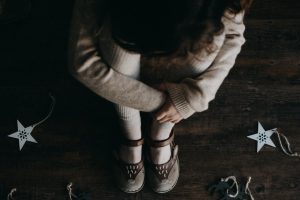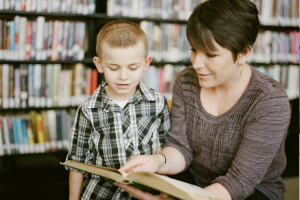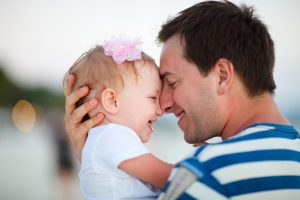What History Tells Us About the Dangers of Separating Children from Parents
 The children who have been forcibly torn from their parents at U.S. borders have more trauma to endure than the parting itself. More likely than not, they will face a lifetime of painful consequences from the terror and neglect they’ve suffered and continue to suffer every minute they continue to be kept from their families. Aside from the intuitive sense of wrong that arises from a basic human heartache felt when we hear the cries of innocent, uncomforted children, there are decades of attachment research showing us just how serious the consequences will most likely be for these kids.
The children who have been forcibly torn from their parents at U.S. borders have more trauma to endure than the parting itself. More likely than not, they will face a lifetime of painful consequences from the terror and neglect they’ve suffered and continue to suffer every minute they continue to be kept from their families. Aside from the intuitive sense of wrong that arises from a basic human heartache felt when we hear the cries of innocent, uncomforted children, there are decades of attachment research showing us just how serious the consequences will most likely be for these kids.
To create traumatic separations from parents affects a person’s attachment system and ability to trust throughout their lifetime. Moreover, the conditions, treatment, and care these kids are currently being kept under are unlikely to provide any sense of safety, let alone the security every child needs to thrive. As the World Health Organization warns, “Inadequate, disrupted and negligent care has adverse consequences for the child’s survival, health and development.”
Attachment research shows us that what children need to thrive is to feel safe, seen, and soothed. How can a child who is being lifted from their parent’s arms, stripped of their toys, and taken into strange circumstances feel safe? How can they feel seen when the person speaking to them doesn’t even speak their language? Or soothed when their cries are being echoed by other helpless children and ignored by powerful adults? Children taken at the borders are being robbed of a secure base from which to explore and trust the world. Here is what history tells us about how these experiences may affect these kids currently and for years to come.
In the 1940s, psychiatrist Lawson Lowrey began to study hospitalized children and noted that children placed in foster homes were showing high instances of “hostile aggressiveness, temper tantrums, enuresis [bedwetting], speech defects, attention demanding behavior, shyness and sensitiveness, difficulties about food, stubbornness and negativism, selfishness, finger sucking and excessive crying.” Around that time, other researchers, such as William Goldfarb and Rene Spitz, further documented the mental and physical effects of separation and deprivation in children placed in orphanages and hospitals, which included “high percentages of cognitive, behavioral and psychological disfunction” and even “high infant death rates.” Most of these deaths were not a result of the children’s physical needs not being met but from emotional deprivation.
Soon after, John Bowlby, who would come to be known as the father of attachment theory, began to travel the world studying childhood deprivation. Having allegedly been separated from his own main attachment figure as a child, his nanny who’d been like a mother to him, and later being sent to boarding school at the age of 7, Bowlby had a personal sense of the pain that can come from being parted with a primary caretaker. As a researcher, Bowlby had a particular interest in the effects of maternal separation. He was curious about the consequences for children in London who were sent away from their families to live in the countryside for their protection during World War II. After the war, Bowlby studied children who, through various circumstances, had been separated from their mothers. Bowlby’s studies led him to publish a report for WHO titled Maternal Care and Mental Health, which essentially concluded “that maternal care and love are essential for a child’s mental health,” and ruptures to this attachment can have dire emotional and developmental consequences. Around this same period just after World War II, researchers were further noticing that children in orphanages who were physically cared for and fed, but who weren’t interacted with or nurtured psychologically, did poorly emotionally and developmentally, and even physically, showing failure to thrive.
In more recent times, studies of children from eastern European orphanages, which one New York Times article called “Exhibit A in the emotional debate over the body of thought known as attachment theory,” have shown significant, often extreme, emotional and cognitive struggles. In the article, Yale University professors Linda Mayes and Sally Provence were quoted:
Continuity of affectionate care by one or a small number of caregivers who can give of themselves emotionally, as well as in other ways, originates the development of the child’s love relationships… Having repeated experiences of being comforted when distressed [for instance] is a part of developing one’s own capacity for self-comfort and self-regulation, and later, the capacity to provide the same for others.
When children in distress and are not being comforted, this significantly interferes with their development. Children reared in Eastern European orphanages have shown behavioral problems, developmental and growth delays, attachment problems, and changes in the structure and function of the brain. They’ve suffered from “attention deficit hyperactivity disorder, post-traumatic stress disorder, psychiatric illnesses and bipolar disorder.” The circumstances the children who’ve been taken at the U.S. border are currently in and the care they’re receiving in this time of stress is likely to be of great significance in an ongoing way in their lives.
Because Bowlby’s research dates back the 40s and 50s, researchers have been able to validate many of his initial concerns about children separated from their parents in wartime. One 2010 study showed that “former evacuees were more likely to have insecure attachment styles and lower levels of present psychological well-being.” Young children who were separated, in particular, were likely to experience an insecure attachment style. Other follow-up studies found that children evacuated during the war who received poor foster care were at greater risk of depression and clinical anxiety. Ruptures to our attachment to early caretakers can have lifelong affects on our ability to relate. Like children kept in orphanages, the children currently being kept from their parents are likely being denied necessary experiences for their optimal mental and physical development. These include:
- Comfort – A child must feel soothed to feel secure. Audio and images of crying children, unattended and in cages, indicate that they are not being comforted and made to feel safe, but rather, the exact opposite; they feel frightened and insecure.
- Mirroring – Children need to feel seen. They need eye contact and to feel mirrored by a caregiver to develop and mature. As interpersonal neurobiologist Daniel Siegel put it, “Through mirroring, attachment to caregivers help the immature brain use the mature functions of the parent’s brain to organize its own processes… Repeated tens of thousands of times in the child’s life, these small moments of mutual rapport [serve to] transmit the best part of our humanity –our capacity for love — from one generation to the next.” This type of interaction likely stands in direct opposition to the lack of attention that most children in these camps are receiving.
- Touch – Amidst concerns and allegations of abuse at some of the shelters, the idea of limited to no touch may seem like a rule designed to protect kids, however, there are also reports of siblings not being allowed to hug and children not being picked up when in distress, which can have detrimental effects. For infants, touch has been associated with significant gains in neurological development.
In the 1940s, Harry Bakwin found that “psychologic neglect” in hospitals was severely damaging, even deadly, to the children. He helped change hospital policy, so that “nurses were encouraged to mother and cuddle the children, to pick them up and play with them, and parents were invited to visit.” The results were lifesaving as “the mortality rate for infants under 1 year of age fell sharply from 30–35 per cent to less than 10 per cent.”
For children in distress and afraid, we can imagine the pain caused by not receiving adequate comfort in these dark and troubling conditions, which comes on top of an almost unfathomable amount of trauma and uncertainty. As the California Psychological Association stated, “The harm caused by this abuse and trauma has been done. Our profession’s scientific literature has documented that separating children from their parents can lead to anxiety, depression, attachment difficulties, trauma, and long-term emotional and intellectual damage.” The American Psychological Association similarly wrote, “Decades of psychological research show that children separated from their parents can suffer severe psychological distress, resulting in anxiety, loss of appetite, sleep disturbances, withdrawal, aggressive behavior and decline in educational achievement. The longer the parent and child are separated, the greater the child’s symptoms of anxiety and depression become.”
Perhaps, one of the most alarming warnings comes from the American Association of Suicidology, which noted the following:
- Separation and isolation from one’s family increases the risk of suicide
- Separation from children, especially unexpected or through traumatic means, can increase the risk of suicide in parents
- Adverse Childhood Experiences (ACEs) have been shown to increase the risk of suicide throughout an individual’s lifespan
- Reports have surfaced that children in understaffed detention camps are attempting suicide with little to no access to mental healthcare or therapeutic support
These conclusions echo the tragic words of Bakwin back in the 1940s when he wrote, ““in infancy the loneliness involved in separation may be not only undesirable but lethal.” To separate older children is no less serious. In this time, our number one effort and goal should be reuniting these children with their parents. The next step must be repairing the psychological damage of the trauma of separation, the injuries to their attachment system, and ruptures to their very sense of security in this world.










Leave a Reply